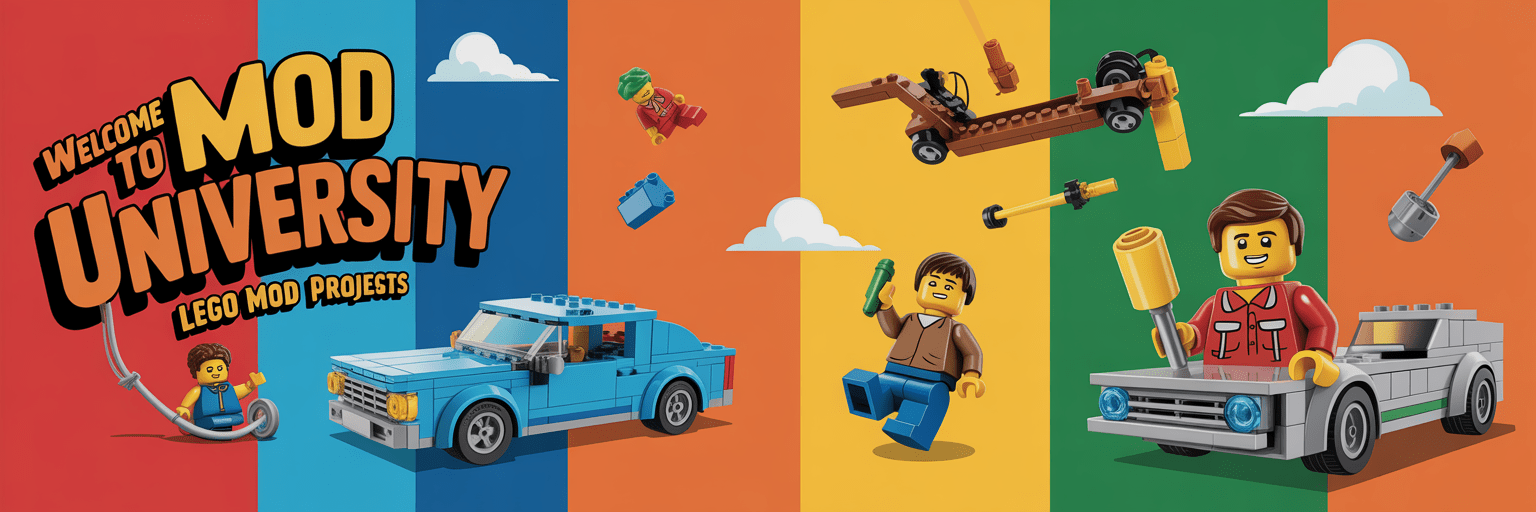Scaling a Mini-MOD into a Full Diorama
Turn a small scene into an immersive world with footprint planning, layered composition, and story-first details.
Mini-MODs are perfect proofs of concept. When one deserves a bigger stage, you don’t just “add more bricks”—you expand the story, composition, and pathways so the scene feels alive. This guide shows you how to scale thoughtfully, keep stability, and finish with photos that sell the narrative.
1) Plan the Footprint First
Choose a Format
- Rectangular base (e.g., 32×32): versatile streetscapes, interiors.
- Widescreen (48×32): vehicles in motion, landscapes, panoramas.
- Vertical (32×32 plus height): towers, cliffs, tree canopies.
Block the Scene
- Place your mini-MOD where the eye should land first (rule of thirds sweet spot).
- Reserve negative space for contrast and breathing room.
- Sketch zones: foreground (texture), midground (action), background (context).
2) Build in Layers (Depth = Drama)
- Foreground: Add texture—curb, plants, rubble, fence. Keep elements low to frame the hero.
- Midground: Your mini-MOD lives here. Enhance with signage, props, and secondary characters.
- Background: Simple silhouettes (hills, skyline, interior wall). Light detail; avoid noisy patterns.
3) Story Beats & Focal Hierarchy
Decide the moment—arrival, chase, quiet morning, emergency repair. Then place clues that support it:
- Primary focal: The hero element from the mini-MOD (vehicle, kiosk, treehouse).
- Secondary: One supporting character or object (customer, mechanic, animal).
- Ambient cues: Posters, litter, tools, signage, footprints—tiny hints amplify the tale.
4) Pathways, Sightlines, and Flow
- Create a path (road, trail, boardwalk) that leads into the frame and arcs past the hero.
- Angle walls and fences at 10–30° to avoid parallel “tunnel vision.”
- Use overlaps (a sign in front of a wall, a canopy over a door) to convey depth.
- Leave pockets of space so minifigs have believable movement options.
5) Elevation & Terrain Tricks
- Stack plates to create subtle slopes; mix normals and inverted slopes for natural ground.
- Use jumpers for half-stud offsets—great for staggered sidewalks and rocky strata.
- Hide color noise inside the base; keep outer shell cohesive for clean edges.
6) Palette, Lighting, and Atmosphere
- Color hierarchy: 1–2 main hues + neutrals. Reserve accents for the hero focal.
- Micro-lighting: Transparent rounds + plates make marquee bulbs and lamps.
- Shadow control: Add canopies and recesses behind the hero to push it forward.
7) Modularize for Stability & Transport
- Break the build into liftable modules: base, façade, roofline, landscape cap.
- Use Technic pins or tiles + jumpers as repeatable connection points.
- Tile the perimeter last for a clean, exhibition-ready border.
8) Diorama Readiness Checklist
- ✔ Primary focal clear at first glance
- ✔ Fore/Mid/Background layered and readable
- ✔ Pathway leads the eye through the scene
- ✔ Stable modules; easy to move
- ✔ Color accents reserved for the hero
- ✔ A few story props (but not clutter)
9) Photograph the Diorama
- Shoot a 45° front-left hero shot; then a low-angle “minifig eye-level” photo.
- Capture three close-ups: hero detail, pathway texture, background silhouette.
- Use a neutral sweep (white/gray) or real sky; bounce light with white card to fill shadows.
Share the build’s title, footprint size, and a one-sentence story caption to frame the viewer’s imagination.
10) 60-Minute Scale-Up Workout
- Drop your mini-MOD on a 32×32 base at a thirds point.
- Lay a simple pathway that curves past the hero.
- Add a thin foreground frame (curb, shrubs, posts).
- Build a low-detail background silhouette.
- Place two story props and one secondary character.
- Stabilize connections; tile perimeter; shoot the hero photo.


